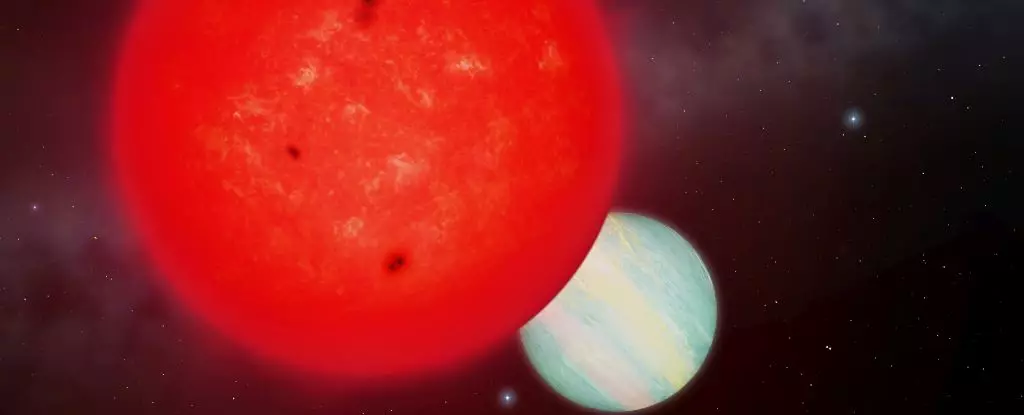In a groundbreaking revelation, astronomers have identified a gas giant exoplanet, TOI-6894b, orbiting a remarkably small red dwarf star, TOI-6894. The extraordinary aspect of this discovery lies in the star’s mass—it is only 21 percent that of our Sun, making it the smallest known host star of a giant planet. This discovery has turned traditional theories about planet formation on their head and opened up new avenues for understanding the complexities of our cosmos. Traditionally, it was believed that such diminutive stars lacked the necessary material to birth substantial planets, particularly gas giants like TOI-6894b, which boasts a radius nearing that of Saturn.
Challenging Established Paradigms
Edward Bryant, the lead astrophysicist from the University of Warwick, noted the sheer excitement among the research team upon this unexpected revelation. Their findings prompt critical evaluation and potential reformation of existing models regarding how planets, especially giants, form around red dwarf stars. It was widely accepted that small stars simply provided insufficient material for the creation of large planetary bodies. However, the existence of TOI-6894b suggests an alternate narrative—one that indicates giant planets can, indeed, coalesce around less massive stellar bodies, adding a layer of complexity to our understanding of planetary formation.
To grasp the underlying processes that shape celestial bodies, we must delve into the mechanics of star and planet formation. When a star forms from a dense gas and dust cloud, it creates a spinning disk of material that ultimately coalesces into planets. Traditionally, the mass of the forming star is directly proportional to the amount of available material in the disk. TOI-6894 challenges this notion, as many astronomers are now considering whether the environmental conditions and processes in these smaller disks might allow for the growth of such massive planets despite the apparent lack of material.
The Search for Clarity in Exoplanet Formation
To comprehend the implications of TOI-6894b’s discovery, it is imperative to explore the methods employed in identifying such distant worlds. The transit method, now a renowned technique in exoplanet discovery, involves monitoring for transient drops in a star’s brightness as a planet crosses its face. For TOI-6894b, researchers observed an unexpected 17 percent decrease in brightness, an unusually significant signal suggesting a robust, voluminous atmosphere. This alone raises questions about the atmospheric composition and the transitioning processes of materials around small stars.
The follow-up studies are poised to offer insights into the nature of TOI-6894b’s atmosphere, particularly as astronomers leverage advanced instruments like the James Webb Space Telescope (JWST). Given the planet’s size, mass, and hypothesized atmospheric composition, it could potentially reveal critical elements like methane, further illuminating our understanding of gas giant atmospheres and their formation.
Implications for Future Research
The implications of TOI-6894b’s discovery extend beyond just one exoplanet; they challenge existing models of planet formation and prompt questions about the variability and adaptability of planetary systems. As noted by both Bryant and his colleague, Vincent Van Eylen, this discovery sets the stage for further exploration into planetary atmospheres and the mechanics that govern the formation of giant planets around lower-mass stars.
Perhaps most intriguing is the need to reconcile the existing models with this discovery. Will future research reveal mechanisms that enable small stars to support massive planets? Are there undiscovered factors influencing planet formation that scientists have yet to consider? As researchers embark on this journey to scrutinize TOI-6894b and its stellar companion, this ambitious endeavor stands as a testament to the ever-expanding universe of knowledge waiting to be uncovered.
With this striking revelation, the community of astrophysicists might very well be at the dawn of new paradigms in exoplanet research, firmly establishing TOI-6894b not just as an anomaly, but as a pivotal cornerstone for understanding the complexities of planetary formation in our universe. The path ahead is fraught with uncertainty; however, each analytical step could pave the way to untangling the intricate web of celestial genesis and evolution, reflecting our relentless pursuit to comprehend the cosmos.


Leave a Reply